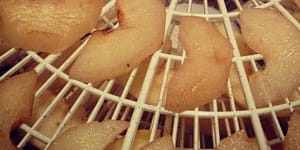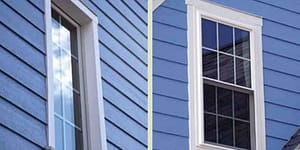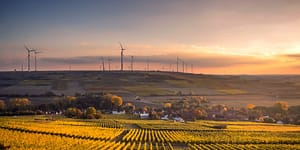Replacing Windows? Understand Your New Glass Options

Having been in my passive solar home for 35 years, my original Alcoa windows were showing their age. The time had come to upgrade. My current experience of selecting which window and glass type to purchase turned out to be more formidable than I anticipated even as a professional in solar home design. There now are multiple choices of window types. Some of these new high efficient windows, however, may actually decrease the effectiveness of a passive solar home.
I didn’t expect to run into any problems with purchasing my new windows. Unfortunately, I was in for a surprise. What follows are some useful tips that I hope will help others select which glass option to purchase and help them to navigate the confusion, mis-information and lack of knowledge that I encountered.
When I was designing and supplying prefabricated Green Mountain Solar Homes, Alcoa windows were a ”price” product. Those Alcoa windows, along with other material savings, allowed me to supply these homes at affordable costs – including my own.
As Green Mountain Homes grew, we became Andersen window dealers. Having had lots of experience with Andersen’s products, I decided to use Andersen’s casement windows in our prefabricated homes.
When I built my solar home, I used Alcoa’s standard dual glazed windows with U-Value of 0.52 and Shade Coefficient of 0.88 (1993 ASHRAE Handbook Values). As some readers may know, the windows and patio doors in a passive solar home serve as solar collectors and are strategically placed on the east, south and west walls of the home. The U-Factor and Shade Coefficient are important considerations in choosing windows as solar collectors. The lower the U-Factor, the less heat is lost back out the windows. The higher the Shade Coefficient, more free solar energy is passed through the glazing.
For folks who have read The Passive Solar House, note that the Shading Coefficient (SC) has been succeeded by Solar Heat Gain Coefficient (SHGC) in the United States, however older windows and doors may still refer to their SC value. The relationship between SHGC and SC may be approximated as: SHGC = SC × 0.87. [As a side note: The SHGC is not to be confused with the Solar Heat Gain Factor (SHGF). Solar Heat Gain Factor’s for each North Latitude are published in the ASHRAE Fundamentals and are also listed in Appendix 2 of The Passive Solar House. The SHGF is used to calculate the total amount of heat gained for each month.]
To refresh your memory, U-Factor is a measure of the rate of heat loss. SHGC defines the amount of solar radiation that will pass through the glass. Again, the lower the U-Factor, the less heat is transmitted out the window. The higher the SHGC, the more solar radiation (free heat) will be transmitted into the home.
Going to Andersen’s website, I found that the Series 400 is available with four different types of Annealed Glass:
-
Low-E4
-
Low-E4 Sun
-
Low-E4 SmartSun
-
Low-E4 PassiveSun
Note: The above designations are all registered trademarks of the Andersen.
Now the decision of which of the above would be the correct choice for my solar home in terms of efficiency in heat loss and effectiveness as solar collectors.
Using the “No Grilles” coefficients, the U-Factor and SHGC are as follows:
|
U-Factor |
SHGC |
|
|---|---|---|
|
Low-E4 |
0.28 |
0.32 |
|
Low-E4 Sun |
0.28 |
0.20 |
|
Low-E4 SmartSun |
0.27 |
0.21 |
|
Low-E4 PassiveSun |
0.30 |
0.54 |
Note the significant changes in these coefficients from my original Alcoa windows to Andersen’s Low-E4 PassiveSun:
|
Old Style Alcoa Dual Glazing |
New Low-E4 PassiveSun |
|
|---|---|---|
|
U-Factor |
0.52 |
0.28 |
|
SHGF (SC x 0.87) |
0.88 x 0.87 = 0.76 |
0.54 |
In other words, Low-E4 PassiveSun will lose about half of the heat of my old style glazing, but will admit only 71 percent of the solar radiation. Low E glass has almost become the new standard window; however, if I selected Low-E4 glass, only 59 percent (.32/.54) of the free solar heat will get into the house. It’s obvious that Low E glass is best for applications that are purposely trying to keep heat out.
To help me further I decided to do some comparative calculations.
-
As the basis of the calculations, I will use the Saltbox example given in Chapter 6 of The Passive Solar House, which has the same windows in my own home. Table 6-15 shows the Saltbox to be 48 percent solar in Hartford, Connecticut.
Total Heat Load = 65,170,000 Btus/year
Purchased Energy = 33,710,000 Btus/year or 343 gallons of oil per year
-
Substituting Low-E4 PassiveSun glazing and entering the same data into CSol (The Design Software included in The Passive Solar House), we get the following comparison:
The Passive Solar House book example using old style glazing:
Total Heat Load = 65,170,000 Btus/year
Purchased Energy = 33,710,000 Btus/year or 343 gallons of oil per year
% Solar = 48
Using Andersen Low-E4 PassiveSun Glazing:
Total Heat Load = 55,510,000 Btus/year
Purchased Energy = 34,970,000 Btus/year or 356 gallons of oil per year
% Solar = 37
**Note that the percentage of Solar went from 48 to 37 but the Purchased Energy is almost the same.
-
One more example, let’s see what happens if we select the now standard Low-E4 glazing.
Total Heat Load = 55,510,000 Btus/year
Purchased Energy = 42,760,000 Btus/year or 436 gallons of oil per year
% Solar = 23
The above examples make it clear that the best choice for my replacement glass for my passive solar home in Vermont is the Low-E4 PassiveSun glass option. Using the standard Low-E4 glass simply was not the correct choice for me, as it would result in higher fuel usage (22.5 percent) in my Vermont solar home.
Armed with this information, I went to two suppliers for price quotations. One is a national supply house and the other a local supplier. They couldn’t price out my requested Series 400 Low-E4 PassiveSun glazing option because Andersen’s pricing software only allows the supplier to price out the first three options listed above. In fact, both suppliers had never heard of Low-E4 PassiveSun glass. It took several emails and phone calls to Andersen to find out that there is an upcharge for Low-E4 PassiveSun glass. Further after placing the order, I later was advised that there would be a delay in getting my “special” order.
The lesson? Whether you are building a new passive solar home or upgrading an existing one, great care has to be taken in choosing what window type will be best for you.
This is a guest post by author James Kachadorian, who wrote The Passive Solar House, Revised and Expanded Edition.
Recent Articles
Looking for a new way to enjoy the benefits of your garden all year long? Follow this easy tutorial for making drying trays to expand the lifespan of fruits, vegetables, and herbs. The following is an excerpt from Preserving Food Without Freezing or Canning by The Gardeners & Farmers of Terre Vivante. It has been adapted for…
Read MoreGetting ready to pile on the blankets this winter? Warm up your home and increase efficiency this winter by weatherproofing or replacing your windows! The following is an excerpt from The Greened Hour Effect by Jeff Wilson. It has been adapted for the web. Weatherproofing Windows for Winter Unfortunately, shopping for windows can be frustrating. The…
Read MoreThe new threshold for green building is not just low energy, it’s net-zero energy. In The New Net Zero, sustainable architect Bill Maclay charts the path for designers and builders interested in exploring green design’s new frontier net-zero-energy structures that produce as much energy as they consume and are carbon neutral. The following is an excerpt…
Read MoreScientists maintain that a mere 2 percent increase in the carbon content of the planet’s soils could offset 100 percent of all greenhouse gas emissions going into the atmosphere. But how could this be accomplished? What would it cost? Is it even possible? The following is an excerpt from Grass, Soil, Hope by Courtney White. It has been…
Read MoreAt the rate humanity is currently burning fossil fuels, we will create an uninhabitable earth long before we run out. So if the pressure of a finite resource doesn’t push us towards a renewable energy revolution, what will? And what will this revolution look like? This is an excerpt from A Small Farm Future by Chris…
Read More







